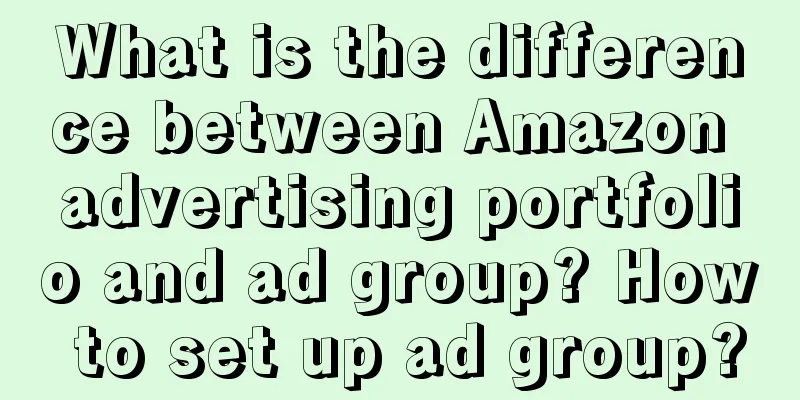The LV boss may be the least relaxed Frenchman

This is the most difficult year for the luxury goods market. Is the 150 million euro sponsorship fee worth it? When Lady Gaga and Celine Dion appeared at the opening ceremony wearing Dior's haute couture, a 2-minute VCR showed the production process of medals and LV bags. For the first time, more than 2 billion viewers around the world experienced "the most fashionable Olympics". The 150 million euros of sponsorship must be worthwhile. LVMH has six "hard implants" of brands: in addition to the Dior performance costumes and Berluti team uniforms that appeared at the opening ceremony, during the following schedule, the audience will also see Chaumet's Olympic medals, Louis Vuitton medal boxes, torch boxes, medal trays and volunteer uniforms from the broadcast screen, as well as Moët; Chandon champagne and Hennessy cognac that appeared at the Olympic reception... No wonder some netizens joked that when the Paris Olympics was all over the search due to various mistakes, stinginess, large-scale performances and overly relaxed work attitude, LV actually became the last face of the French. For LV boss Bernard Arnault, all this may be more like finding joy in misery. Last week, LVMH released its quarterly financial report ending June 30, with revenue in the Asian market falling by 14%. This is the second consecutive quarter of decline in the Asian market, excluding Japan, and has also dragged down the group's revenue in the first half of the year by 1%. Earlier, Bloomberg Businessweek revealed that Bernard Arnault was initially reluctant to sponsor the Olympics because it "would not bring significant revenue growth to the group." The boost from the opening ceremony did not last long, as LVMH's stock price fell 3.5% this week, with a latest market value of 353.47 billion euros. Last week was also the most exhausting week for the luxury goods industry. The prosperous sponsorship events contrasted with the performance figures that were in the red. Kering, Burberry, and Hermès all announced earnings that were below expectations. The strategy of the giants to "turn to the rich" failed, and they found that they still had to rely on the young middle class to save their performance. 1. Who else does LV want to attract?In the past decade, so-called inspirational consumers have been the engine supporting the development of the luxury goods market. To date, one-third of LVMH's revenue comes from "newly rich" Chinese consumers, most of whom are born in the 1980s and 1990s. A considerable part of LVMH's revenue in the European and Japanese and Korean markets also depends on the wallets of Chinese tourists traveling abroad. The latest signs show that the spending power of Chinese tourists who have the financial resources to spend lavishly in Japan is also declining as the yen depreciates. Hermès, a representative of hard luxury, said that the growth of the Japanese market this quarter was due to local customers, not Chinese tourists. Hermès's rapid slowdown in the Asia-Pacific market, including China, saw revenue growth of 5.5% to 1.6 billion euros, compared with a growth of 13.9% in the first quarter. As mainstream consumer groups retreat, the meaning of LVMH's sponsorship of the Olympics is self-evident: to tap into potential consumer groups in the future. However, the Olympics' appeal to young people has been declining. The median age of American viewers watching the 2016 Rio Olympics was 52, compared with 49.5 at the London Olympics four years ago and 45.5 at the 2000 Sydney Olympics. According to iiMedia Research, nearly 40% of Chinese viewers of the Tokyo Olympics are between 31 and 40 years old, and 16.12% are between 41 and 50 years old. The middle-aged and elderly group between 41 and 60 years old is significantly more enthusiastic about the Olympics than the younger generation, and most of them have watched more than seven consecutive Olympic events. Some people think that the problem may lie in the way of viewing. “Young people haven’t lost interest in sports,” said Michael Neuman, managing partner of Scout Sports and Entertainment, a division of U.S. marketing consultancy Horizon Media. “In fact, engagement has never been higher.” “[The problem is] the linear, ‘what you watch, we broadcast’ broadcast experience is becoming less appealing to younger audiences, who want to move to other platforms where they have more control over content, access, information and statistics,” he said. When short video platforms emerged, the most essential and entertaining moments of one or more games were pieced together and condensed into short videos of two or three minutes - this has become the way young people watch the Olympics. Faced with a new platform, the Olympic Committee was naturally able to adapt. It is said that the TikTok account, the official channel of @Olympics, attracted 1 million young fans in just one year. The problem is that luxury brands, which have always emphasized "grand and thematic" narratives, have always been very volatile in their attitude towards short video marketing. For a long time, the attitude of luxury goods towards short video marketing has been "want to love but afraid of being hurt", because the universality of the Internet, the lowest price in the live broadcast room, "shouting and selling" and other public impressions are completely contrary to the values of luxury goods. Even a radical company like LVMH only relies on live broadcast channels for exposure or node marketing, and the majority of transactions still rely on offline. 2. Possibility of achieving short-term conversionAny form of sponsorship will ultimately be reflected in the financial report figures. The costumes unveiled at the opening ceremony did not cause much excitement on Chinese social networks, where netizens were more interested in Lady Gaga's tattoos than Dior costumes. A "curious show" on the Passerelle Debilly bridge that mixed a catwalk with different styles of dance went viral on social media, with drag queens and dancers wearing brands from young French designers - not the LVMH group. One detail is that on Xiaohongshu, the platform most favored by luxury brands, the most discussed topic about LVMH’s sponsorship of the Olympics is “CCTV’s live broadcast never mentioned LV”, which once again reflects the loss of luxury brands’ voice in communication in the social media era. However, are there any historical examples of driving performance growth through sponsoring sports events? Yes, but the protagonists are often not luxury brands but sports brands, and the target is basketball, football or rugby players. Because the operation of these events is more mature and the number of spectators is large enough. Nike and Adidas spend hundreds of millions of dollars on player sponsorship every year, and of course the results are significant: the AJ series named after Jordan has become Nike's most profitable storefront. Looking back at LVMH’s sports sponsorship history: in the early 20th century, the pleated skirt designed by Jean Patou broke the norms of women’s sports at the time; since 1983, Louis Vuitton has been associated with sailing; Tiffany has created trophies for the Super Bowl, NBA, US Open, etc.; HUBLOT is the official timer for top events such as FIFA and UEFA... It is not difficult to see that LVMH deliberately selects so-called aristocratic sports, and the sponsorship targets are often events rather than the players themselves. This is the caution that luxury groups should have when facing occasions with strong appeal. Louis Vuitton and Dior announced a number of athlete spokespeople and brand ambassadors before the Games, including Paralympic athletes, and Dior China also announced two Chinese athletes as brand friends. This kind of limited-time promotional endorsement has long failed to arouse the public's desire to buy. There is a chance. The balance of power between star athletes and the brands they endorse is beginning to shift: for well-known reasons, Nike and Adidas are cutting their budgets, so the conversions from each sponsorship are also taken into consideration. As a result, only the star players who can bring the most goods can get the contract. At the same time, the conditions offered by brands to players are becoming increasingly stringent: simply put, as long as you choose a certain brand, you can only wear it on most occasions, not to mention that the amount of each sponsorship contract has shrunk significantly. If brands like lululemon, on and Sketcher can follow Nike and adidas and pick up the top players they "discarded", why can't LVMH? Last year, LVMH's most promising brand, CELINE, launched a tennis capsule series, which was obviously jealous of Ralph Lauren's effective marketing of turning the US Open audience seats into a show: in fiscal 2024, Ralph Lauren's performance exceeded expectations, with revenue of US$6.63 billion, a year-on-year increase of 2.9%, and Q4 net profit soared by 181%. In an interview, executives said that they would continue to "focus on core products and develop high-potential, low-penetration categories" based on changes in consumer lifestyles, and they almost wrote "a brand dedicated to aristocratic sports" on their foreheads. Ralph Lauren is also the designer of the US team uniforms in this Olympics. Of course, the problems facing the luxury industry are far from being solved by sponsoring a sports event. After the mid-20th century, the collectivization and capitalization of the industry model brought unprecedented growth to the fashion luxury economy. However, when the cultural dividend of "Eurocentrism" faded and capital transactions were carried out without a single word, the luxury market today faces the risk of gradual homogenization of brand assets. In 2021, Bernard Arnault stated that he wanted to establish Louis Vuitton as a "cultural brand", inviting celebrity design directors and vigorously reproducing classic designs with black pop culture, all of which revealed the intergenerational inheritance crisis of luxury brands in the new era. As sports gradually move beyond the era of national participation and become an elite lifestyle that the general public can display through consumption without having to train hard, LVMH needs to do more than just engrave its name on the trophy. Author: He Zhexin; Source: 36氪 Future Consumption (ID: 774470) |
<<: Tik Tok prohibits pretense and cracks down on fake personalities!
Recommend
Is there any interest on a one-time credit card repayment? How to repay a one-time credit card repayment?
As an important tool for modern consumer life, cre...
What is the overall strategy of Amazon advertising? Three major strategies shared
As the Amazon platform continues to grow, more and...
Do I need to use a VPN to use Shopify? What are the advantages of building a website with Shopify?
Shopify is a relatively well-developed independent...
With high likes and widespread business orders, are comic bloggers becoming the new favorite of brands?
Comic bloggers are becoming a popular track nowada...
"Copying" Brother Yang, a crazy business
Why can we always watch the live clips of big anch...
One video gained 140,000 followers. This track is making rapid progress on Xiaohongshu
A video about dismantling a home gained 140,000 fo...
Should entrepreneurs become internet celebrities?
In today's age where traffic is king, whether ...
Do I need a business license to open a Shopify store? How many stores can I open?
Today I will tell you about opening a store on Sho...
After the GMV of the first live broadcast exceeded 100 million, why did Tai Er Pickled Cabbage Fish become the center of attention?
Recently, the "old internet celebrity" i...
【0 to 1】New product features and operational rhythm
This article shares the experience and reflections...
How to activate Amazon membership? How much does it cost?
When shopping on Amazon, if you are an Amazon memb...
How to choose a store name on Amazon? Naming tips
Amazon platform covers major markets around the wo...
The difference between a copywriter with a monthly salary of 3,000 and a copywriter with a monthly salary of 30,000
This article starts with marketing copywriting and...
eBay Australia plans to discontinue eBay app on Shopify
eBay Australia announced that the eBay application...
WeChat has updated these practical functions!
WeChat's latest update brings a host of exciti...









